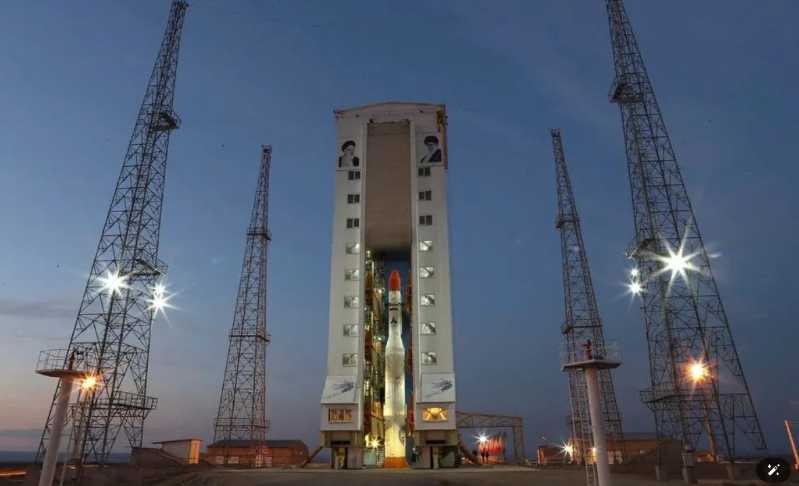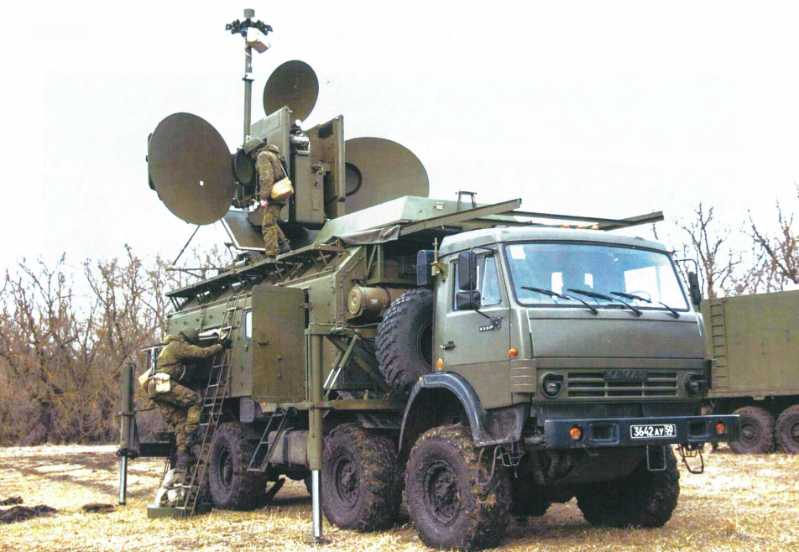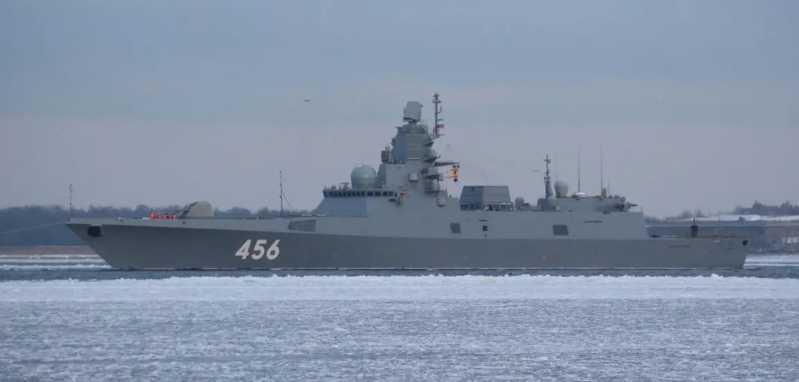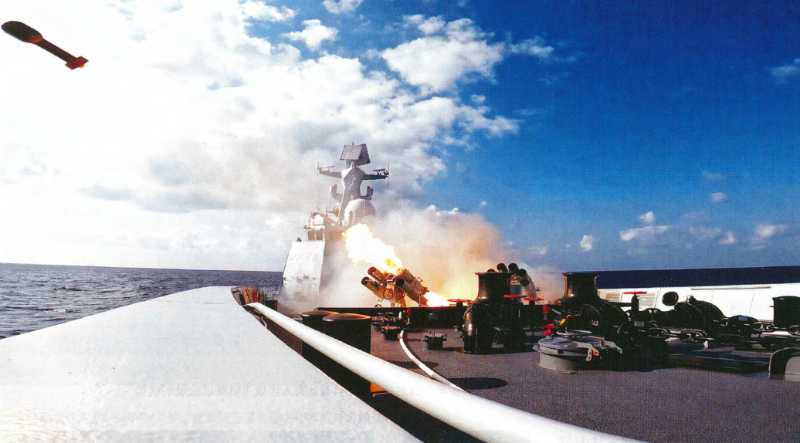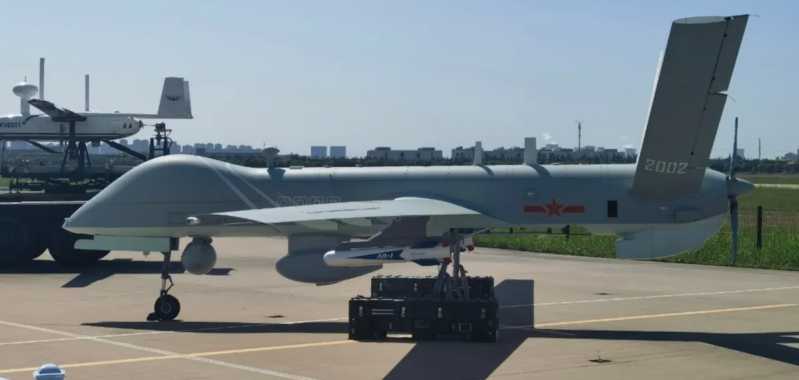On February 9, 2020, Iran launched the independently developed "Phoenix" carrier rocket (title picture) before the anniversary of the Islamic Revolution. Because the "Victory" satellite on board did not enter the orbit fast enough, it failed to enter the predetermined orbit and the mission was declared a failure. Two months later, although Iran successfully launched the "Noor" military satellite with the "Messenger" carrier rocket on April 22, the West seemed to be more concerned about the "Phoenix" carrier rocket, which had failed repeatedly. Since then, the United States and Israel have repeatedly accused Iran of secretly developing ballistic missile technology by launching the "Phoenix" carrier rocket. So, what is the performance of Iran’s "Phoenix" carrier rocket? Does it have the potential to develop ballistic missiles?
"Phoenix" launch situation
This launch is the third failure of the "Phoenix" carrier rocket in a total of four launches since April 2016. Judging from the failure situation, this launch has many similarities with the previous ones.
At 19:15 local time on February 9, 2020, the Iranian Space Agency launched a rocket 230 meters from Tehran in Semnan Province, Iran. The "Victory" (Zafar) satellite was launched from the Imam Khomeini National Space Center at an altitude of 1,000 kilometers, using the independently developed "Phoenix" (Simorgh) carrier rocket to carry the "Victory" (Zafar) satellite, but the satellite was not sent into the planned orbit and the launch failed. According to the plan, the "Victory" remote sensing satellite will be sent into a low-Earth orbit at an altitude of 550 kilometers from the ground. The satellite was independently manufactured by Iran and has color photography capabilities. February 11 is the 41st anniversary of the victory of the Iranian Islamic Revolution. The launch of the "Victory" remote sensing satellite is an important part of its celebration, intended to demonstrate national prestige and boost public morale. Iranian Defense Ministry spokesman Husseini said that the rocket "successfully" pushed the satellite into space. The satellite has traveled "90% of the way" and reached 540 kilometers in altitude. Experts will analyze the data and correct the errors in preparation for the next launch.
Accident Analysis
Engine ignition failure Iranian Defense Ministry spokesman Husseini later issued a statement saying that during the launch, although the first and second stage rockets of the Phoenix rocket operated normally and the Victory satellite was successfully separated from the rocket, the satellite did not reach the predetermined speed required for orbital entry at the end of its orbit. We know that the launch vehicle needs to accelerate the satellite payload to the first cosmic speed at a specific inclination at the last moment to launch a satellite, so that the satellite can fly around the earth at a constant speed. The first cosmic speed is generally considered to be 7.9 kilometers per second, which is the speed at which the satellite flies around the earth’s surface. Because the air in the atmosphere at a certain distance from the earth’s surface is dense and the satellite’s flight resistance is also large, the satellite needs to be at an altitude of more than 150 kilometers to avoid rapid decline due to air friction resistance, and the first cosmic speed at this altitude is 7.8 kilometers per second. Based on this calculation, the first cosmic speed at the near-Earth orbit altitude of more than 500 kilometers required by Iran is about 7.4 km/s. Due to problems with the Phoenix upper stage, either the ignition failed, the ignition was delayed, or the engine thrust was insufficient after ignition, resulting in the Victory satellite being unable to enter orbit and eventually falling into the atmosphere. Iranian Minister of Communications and Information Technology Mohammad Jahromi revealed: "In the last 12 seconds, the rocket’s fuel or engine power must be increased to achieve the required speed. But this did not happen, which may be related to the fuel mass and weight of the second stage, or it may be related to the engine’s power system. "From this statement, it can be seen that the cause of the accident may also be that the shutdown speed of the liquid engine of the second stage of the Phoenix did not reach the predetermined value, resulting in the delay of the ignition of the second stage. From the information disclosed by the outside world, the upper stage of the Phoenix uses a solid-fuel rocket engine, and the reason for the second launch failure in 2019 also occurred in the solid-fuel rocket engine of this stage. Although Iran did not specify where the fault was, it is worth noting that after the launch failure, Iran quickly unveiled a new solid-fuel missile called "Thunder" 500, and demonstrated a new solid-fuel engine and manufacturing technology, and claimed that the latest developed "Zohair" composite rocket engine and "Salman" thrust vector rocket engine can also be used in launch vehicles. This seems to imply that Iran has found the problem and has the ability to solve these problems by using new engines.
Hacker network attack There is news that this time The failure was the result of cyber attacks by the United States and Israel. Israeli Prime Minister Benjamin Netanyahu’s comments on the failure of Iran’s satellite launch implied that Israel had successfully participated in the launch of Iranian rockets and long-range missiles. Although Iran denied reports that the Israeli intelligence agency Mossad was involved in the satellite launch, before the launch of the satellite, many hackers did launch cyber attacks on Tehran, which was confirmed by Iranian officials. The head of Iran’s Information Security Agency, Fataki, called the attack the "largest" cyber attack, which lasted about an hour and caused network failures of many operators in the country. Although there is no direct evidence that this cyber attack is related to the failure of Iran’s satellite launch, the two occurred at a very close time, making the matter more suspicious. However, when North Korea’s missile launches failed three to four years ago, the United States also revealed the existence of similar network and industrial infiltration plans. Japan even included similar attempts in its public budget plan. In particular, in 2010 The "Cybershock" virus attack on Iran’s Bushehr Nuclear Power Plant in June 2011 caused Iran’s nuclear program to be delayed by 2 to 3 years. This virus that specifically attacks Iran’s nuclear facilities was later confirmed to have originated from the US military. Therefore, it is currently impossible to completely rule out the possibility that the United States and Israel used cyber attacks to cause the launch failure.
The basic composition of the "Phoenix" launch vehicle
Iran’s launch vehicles mainly include two series: "Messenger" and "Phoenix". The "Phoenix" rocket launched this time was unveiled by then Iranian President Ahmadinejad in 2010. Compared with the "Messenger", the "Phoenix" rocket has not only increased in size and weight, but also has a different overall design. The "Phoenix" rocket used this time is an improved version of the initial model unveiled in 2010. Although Iran has never announced relevant details, from the pictures revealed by Iran combined with relevant information, we can know that the "Phoenix" launch vehicle is 27 meters long. meters, mainly composed of the first and second stage rocket engines, orbital engines and satellite payloads.
-stage rocket engine

The first stage of the "Phoenix" carrier rocket is 17.5 meters high and 2.5 meters in diameter, using four parallel liquid-fuel rocket engines. It is believed that these four parallel rocket engines are derived from Iran’s "Meteor" 3 missile in service, which uses the "Labor" missile technology introduced from abroad. Each engine of the first-stage rocket has a thrust of about 30 tons, and after parallel connection, it achieves a takeoff thrust of about 130 tons. In fact, North Korea’s "Galaxy" series of carrier rockets also adopts a similar design idea, that is, four "Labor" missile engines are connected in parallel to increase thrust. It should be noted that in addition to the four main engines, in order to achieve the flight control of the rocket, the first-stage rocket is also equipped with four LRE-15 small swing liquid engines. The LRE-15 is derived from the nomadic engine of the Soviet R-27 submarine-launched missile and is also the nomadic engine of Iran’s latest Khorramshahr and North Korea’s Musudan medium-range missiles. Like the Meteor 3 missile, the first-stage engine fuel of the Phoenix rocket also uses UDMH and nitrogen tetroxide, which have higher combustion efficiency. Although this type of fuel is more dangerous, it can significantly increase the engine thrust, which is also the main difference between the latest improved Phoenix rocket and the initial model in 2010.
Stage rocket engine
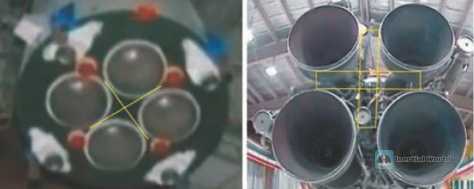
The second stage of the Phoenix launch vehicle is 5 meters high and 1.5 meters in diameter. It uses two LRE-4 low-thrust liquid fuel engines in parallel. This engine also originated from the Soviet R-27 missile. It may have been improved and enlarged. It is actually an enlarged version of the LRE-15 used in the first stage. Judging from the service of the "Khorramshahr" missile, Iran should have mastered this small liquid rocket engine technology, but it is not mature. For example, on July 27, 2017, the "Phoenix" rocket failed during a space launch due to a failure of the second-stage liquid rocket engine.
Orbital rocket engine
The orbital rocket stage of the "Phoenix" rocket is 1.25 meters high and 1.5 meters in diameter.
Because it is closely integrated with the satellite payload and part of it is in the fairing, some media call this stage engine the third stage of the "Phoenix" rocket, also known as the upper stage. This stage uses the saman-1 solid fuel rocket engine. Although Iran’s solid missiles have performed well in many actual combats, such as the "Conqueror" series of solid missiles that retaliated against the U.S. military’s Assad Air Base in 2020, the hit accuracy is good, but its control technology is still relatively weak. The third stage of the Phoenix rocket had already failed during the launch on January 15, 2019. The problem in this launch is still on the third stage, indicating that Iran has not yet truly mastered the third-stage rocket technology.
Satellite payload
The fairing of the Phoenix rocket is 3.2 meters long and 1.5 meters in diameter, carrying the Victory 1 remote sensing satellite. The satellite costs about 2 million euros and weighs 113 kilograms. Iran said the satellite is designed for natural disaster monitoring and agricultural, forestry and oil exploration. It is equipped with a color high-resolution camera that can take high-resolution images of the ground. The satellite is considered by the United States to be a "provocation" by Iran to the international community.
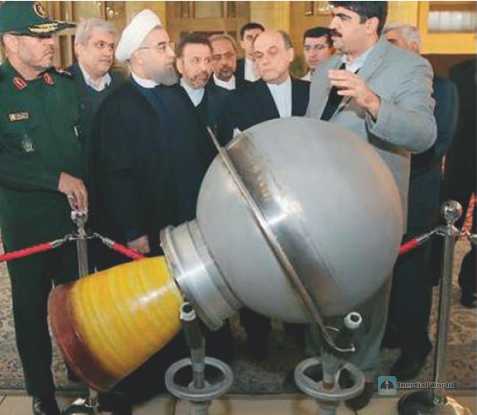
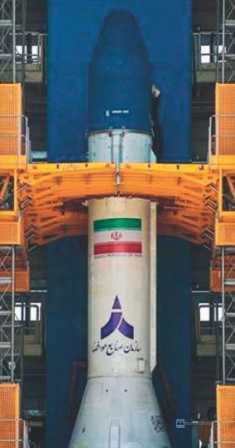
The basic performance of the Phoenix launch vehicle
The Phoenix launch vehicle is Iran’s most advanced space launch vehicle. It is labeled as a military vehicle by the West, so its technical level is also considered to reflect the level of Iran’s long-range strategic strike capability. The overall design is basically reasonable, but the reliability is not high. The overall design of the Phoenix launch vehicle is very similar to that of the North Korean Galaxy series of launch vehicles. Although there is a big gap with the design of launch vehicles dedicated to space powers, in terms of Iran’s current rocket technology level, compared with the previous Messenger rocket, the overall design is basically reasonable. The "Messenger" rocket is very similar to North Korea’s "Taepodong". It uses the existing system in multiple stages in series to enhance its carrying capacity, making it look like a pencil overall, resulting in a large aspect ratio. Not only is the launch efficiency low, but it is also easy to produce elastic vibrations of the projectile body, which can easily lead to instability of the guidance system and even disintegration of the rocket and satellite, and it also greatly limits the potential for further thrust improvement. The "Phoenix" rocket uses four engines in parallel in the first stage and two engines in parallel in the second stage. The diameter of the first stage is 2.5 meters, and the diameter of the second stage is controlled at 1.5 meters.
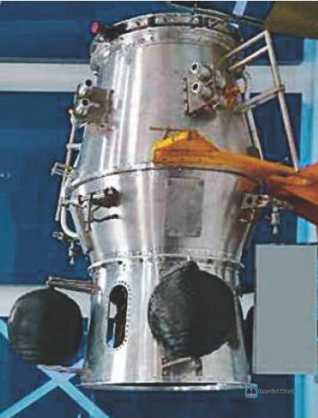
From the perspective of launch efficiency, this design with a large bottom and a small top and a decreasing mass is more reasonable. However, it should also be noted that due to Iran’s limited engine design and manufacturing capabilities, it is impossible to manufacture large engines, so it has to use multiple parallel engines. If the auxiliary engines are included, there are more than 10 engines in the second stage rocket, which undoubtedly makes the system complicated and greatly reduces the system reliability. So far, the Phoenix rocket has actually carried out a total of 4 launches, of which only the first payload-free launch in April 2016 was successful. The launch in July 2017 failed due to a second-stage rocket failure, and the launch in January 2019 failed due to a third-stage rocket failure. This launch also failed due to a problem with the third-stage rocket. The payload has many functions, but the technical performance is insufficient. The "Victory" 1 remote sensing satellite launched this time weighs 113 kilograms and is a microsatellite. It is about 20 kilograms heavier than the Soviet Union’s first satellite, but 1/3 less than China’s first satellite "Dongfanghong" of 173 kilograms. The weight of North Korea’s first successful launch, "Kwangmyŏngsŏng 3", is only about 100 kilograms, which is similar to "Victory" 1. Although Iran’s rocket delivery capabilities are limited, Iran has cooperated with Russia to develop satellites with various payloads since the beginning of this century. In the case of cooperation with foreign countries, Iran From 2009 to 2015, Iran continuously tried to manufacture various types of satellites, and commissioned foreign countries to launch four satellites in succession, realizing independent research and development of communications, mapping and micro-satellites, such as Observation 1, Science and Industry Pioneer and Dawn. Victory 1 was also independently developed by Iran. The camera used was not of high performance, and the ground resolution accuracy of the image was 22.5 meters. Some sources also said it was 80 meters. In the international market, this performance can only be barely used for civilian mapping, and its military value is limited. Although Iranian Minister of Communications and Information Technology Mohammad Jahromi said at a cabinet meeting that the design, manufacture and testing of the Victory 2 satellite have been completed, it will be more advanced than Victory 1, and its camera resolution will be higher, with an accuracy of 16 meters.
Carrying capacity has been improved, but development potential is limited
The power system of the Phoenix launch vehicle uses a parallel engine structure, which is much more powerful than the previous Iranian-made Messenger rocket, which used a series connection. The Messenger 2 rocket is 22 meters long, 1.25 meters in diameter, and weighs 26 tons. It uses a two-stage series connection and has a low-orbit carrying capacity of only 50 kilograms. The initial Phoenix rocket announced in 2010 is about 27 meters long and has a launch mass of about 87 tons. Its size and weight are similar to the Long March 1 launch vehicle launched by my country in 1970, and its low-Earth orbit delivery capacity is also at the level of 300 kilograms. The improved Phoenix rocket launched in 2016 has no major changes in length and appearance. By improving the fuel and adding the upper stage (third-stage solid rocket) of the satellite, the launch mass has reached 130 tons and the low-orbit carrying capacity has reached 500 kg. However, from the perspective of controllability, the large number of parallel rocket engines in the Phoenix makes the design and use more complicated and reduces reliability, so its potential to further increase thrust is limited. Judging from the situation of Iran’s new solid rocket engines, if Iran wants to further improve the launch efficiency, it can use carbon fiber composite materials on key components to reduce the overall weight, but the technical and labor costs of doing so are high. Mastering separation technology, but orbit entry is not yet mature Since March 2016, Iran’s Phoenix rocket has carried out a total of 4 launches. Although almost all of them ended in failure, there has been great progress each time. Gradually overcome the second-stage failure and add a third-stage engine. In particular, the problems in the third and fourth launches all occurred in the first and second stages in front of the third stage and the separation of the second and third stages was almost completely successful. This shows that after many failures, Iran has mastered the complex interstage separation technology, which was once a long-standing problem that plagued North Korea’s space launches. At present, the main problem is the ignition and thrust of the third stage, which actually boils down to the control problem of the third stage. However, Iranian officials claimed that the rocket successfully transmitted valuable telemetry data before the failure, which is expected to enable engineers to find the problem that prevented the satellite from entering orbit. It is generally believed that Iran has not mastered the fine vector control technology of solid rockets. This technology is acceptable for short-range solid-fuel ballistic missiles, but it is difficult to ensure its reliable operation in space and complex mechanical environments. Iran seems to be aware of this. On the day of the launch on February 9, 2020, when Iran announced the new short-range solid ballistic missile "Thunder" 500, the spokesperson specifically mentioned a new solid fuel engine. The engine is used for the secondary stage of light spacecraft and is made of the same composite materials as the military. It can perform thrust vector control, can send satellites into orbit, and can also allow missiles to adjust their attitude during flight.
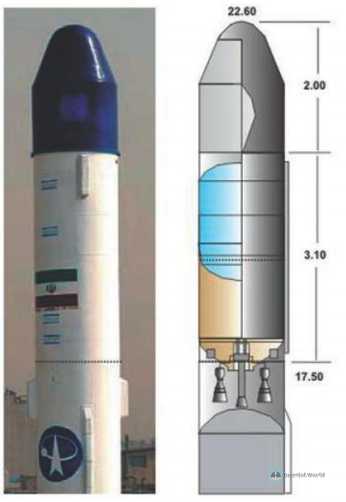
The ballistic missile development potential of the "Phoenix" rocket
Since 2009, the United States has accused Iran’s space program of "developing intercontinental ballistic missiles in disguise." After Iran launched a satellite with the "Phoenix" rocket, both US Secretary of State Pompeo and Israeli Prime Minister Netanyahu said that Iran’s behavior was not in line with UN Security Council Resolution 2231 and was part of its missile development plan. So, does Iran’s launch vehicle have the potential for missile development? In what ways will it promote the advancement of Iran’s ballistic missile technology?
Refitted into a long-range missile, but not very practical
Many Western media initially reported that when the "Phoenix" rocket launched a satellite, if the rocket was successfully launched, it would mean that Iran had the ability to launch intercontinental missiles and could put 300 kilograms of objects into Earth orbit. Some military experts also believe that the launch of satellites is the beginning of Iran’s intercontinental missile program. Iran may develop a long-range ballistic missile with a range of 4,000 kilometers through a series of tests. Uzi Rubin, former head of the Israeli Missile Defense Organization, also believes that a reconnaissance satellite with considerable functions should weigh about 300 kilograms. Once Iran is able to send 300 kilograms of objects into Earth orbit, it may convert the satellite launch device into an intercontinental missile and drop such a heavy object anywhere in the world. In fact, it is not easy to convert a carrier rocket into an intercontinental missile. As we all know from the previous introduction, the "Phoenix" rocket is a first-stage rocket with four engines connected in parallel, with a diameter of 2.5 meters. In order to reduce the cost of launch, carrier rockets usually use commercial fuel and work processes. Although the cost is low, the refueling time is long, the safety level is low, and the work procedures are cumbersome, which usually takes dozens of days for its pre-launch preparation, and even entering the launch site requires 3 to 5 days of launch preparation and testing time. This cannot meet the requirements of the troops for rapid launch and covert maneuvers. Therefore, even if it has long-range delivery capability, it lacks operational practicality.
Verify large rocket design and accumulate experience for missiles
According to UN Security Council Resolution 2231 (2015), the Security Council urged Iran not to conduct any ballistic missile activities involving the delivery of nuclear weapons, including rocket launches using ballistic missile technology. Iran’s current "Emissary" and "Phoenix" rockets are inseparable from liquid ballistic missile technology. In fact, it cannot be denied that Iran’s active development of launch vehicles, especially the "Phoenix" large rocket, is largely due to military considerations. This situation also exists in North Korea. After North Korea launched several "Taepodong" and "Galaxy" series rockets, its ballistic missile development has made great progress. Therefore, through the development and launch of the "Phoenix" rocket, Iran can verify the development capabilities of large multi-stage liquid rockets, which will help develop mobile liquid long-range ballistic missiles like North Korea’s "Mars" 14 and "Mars" 15.

Collect reliability data and test key components
It is difficult to prohibit the development of carrier rockets both legally and morally. This can be seen in North Korea’s space development. Although carrier rocket launches are very different from missile launches, the reliability data of systems and key components can be collected through carrier rocket launches to provide reference for missile development and improvement. For example, the first stage of the "Phoenix" rocket mentioned above is composed of "Meteor" missile liquid rocket engines in parallel. Therefore, through carrier rocket launches, the working parameter curves of almost the same model engines under different working hours and internal pressures in the flight environment can be tested, providing reference for missile improvement. In fact, Iran has mastered the design of medium-range missiles, but what it lacks most is the actual working data of key components and systems, which leads to low reliability of rocket engines and missile systems. For example, in the early morning of January 8, 2020, Iran launched the "Martyr Soleimani" revenge operation for the "beheading" of the Revolutionary Guard General Soleimani by the United States, using "dozens of missiles" to carry out a long-range ballistic missile raid on the US military base in Iraq. During the raid, the "Conqueror" 313 solid-fuel missile used on Assad Airport was more effective, while the "Chiam" 1 liquid-fuel missile used on the Erbil base almost exploded and disintegrated before reaching the target. The reason is that the liquid fuel engine is not reliable and cannot work stably for a long time in a complex flight environment. Through ground testing of similar engines and actual launch of carrier rockets, a large amount of reliability data can be collected to provide a basis for the improvement of related missiles.

Assembly workshop inside the Iranian Satellite Launch Center
Develop dual-use technology to legalize scientific research and production
As we all know, carrier rockets and ballistic missiles are essentially the same in technology, and 95% of the technology is dual-purpose for military and civilian use. In an article titled "Iran Prepares to March into Space," the U.S. "Aviation and Space Technology Weekly" said that Iran’s rockets may become "a wolf in sheep’s clothing" in its long-range missile test launch process, because the technology required to build a launch vehicle is not much different from the technology required to build an intercontinental ballistic missile that can carry a warhead. John Sheldon of the School of Advanced Space Studies at Maxwell Air Force Base, USA, said: "They use the same core technology, but they differ in the guidance system and fuel. In addition to technology, the launch vehicle design and manufacturing infrastructure and missile production facilities also have dual uses. Through the development of launch vehicles, most of the missile infrastructure can be built or retained, allowing it to avoid sanctions and legalize its existence. For example, Iran’s Shahid Bakari Company, which is responsible for the design and manufacture of the "Messenger" and "Phoenix" launch vehicles, is affiliated to the state-owned Aerospace Industries Organization (AIO). The complex has developed and produced more than 30 tactical missiles, covering many fields such as anti-ship, ground, air defense, and anti-submarine. Its scientific research and production capabilities are second to none in the Middle East and are the focus of sanctions by the United States and other Western countries. Satellite launches may legitimize its existence.


